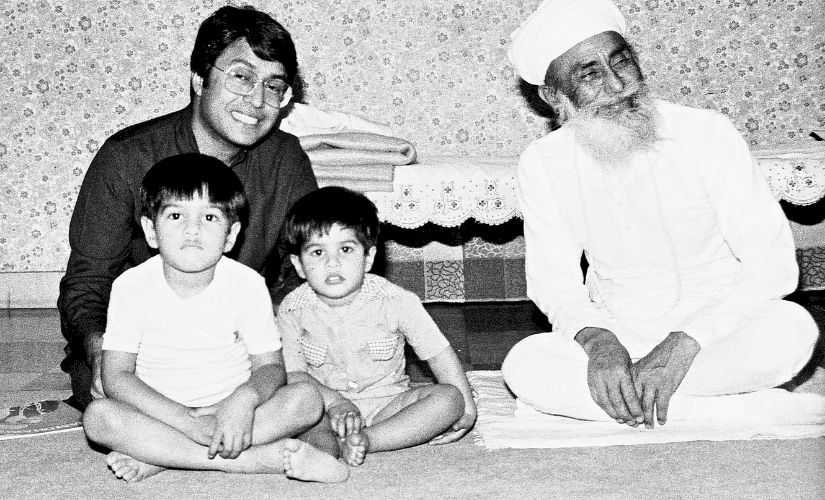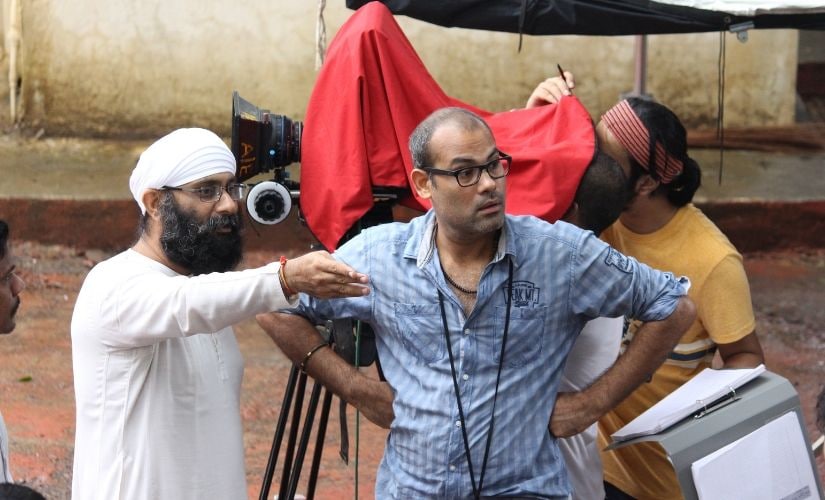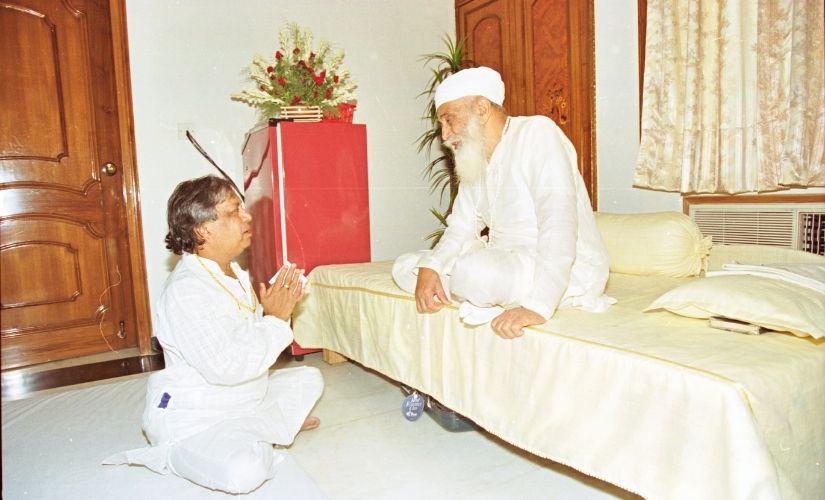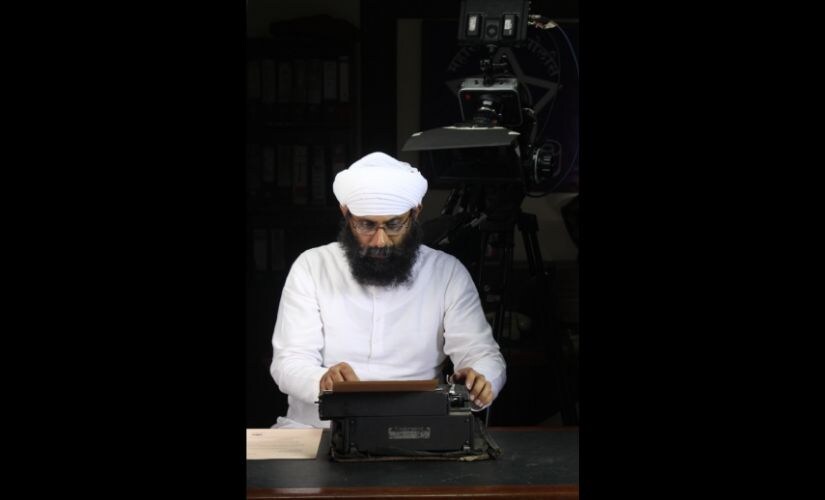Imagine a world where every child born can sing to perfection, where every household wakes up listening to someone’s riyaaz, and every classroom rings with the chants of tables and ragas alternately. Punjab’s Bhaini Sahib village is just that, and more — it also headquarters the Namdhari sect of Sikhs, a community steeped in the spiritual pursuit of god through music. Anchoring this unique religio-cultural legacy, until recently, was the legendary head of the community, Satguru Jagjit Singh (1920-2012), a spiritual leader whose contribution to classical music remains unmatched. “Being a Namdhari from birth, I was not really a hard follower until 2001, when I was going through a stressful period in my life, and I went to Bhaini Sahib to seek out my roots and to seek Satguru Ji’s blessings. It was probably for the first time in my life that I was having a long conversation with him, and during the conversation, the idea cropped up that I should make a documentary on who he is and what all he had done for the Namdhari community,” says Taranjiet Singh, whose documentary Sangeet Saroop Satgur assembles the likes of Zakir Hussain, Amjad Ali Khan, Shivkumar Sharma, and Birju Maharaj, among others, to commemorate the man and his unparalleled contribution to Indian music. [caption id=“attachment_7176801” align=“alignnone” width=“825”]  Satguru Jagjit Singh with a young Amjad Ali Khan and his sons.[/caption] In one of the initial scenes in the 160-minute-long documentary, Jagjit Singh says: “Our kitchens distribute free meals (langar). Similarly, our concerts have free entry too. The gift of music has been granted to us by Satguru — this gift should be made available to all those who listen and understand it.” The words accurately sum up what he stood for — a soul relentlessly pursuing the arts, while showing the way to an entire village of followers. Satguru Jagjit Singh was initiated into music by his father, Satguru Partap Singh. He later went on to master the Dilruba under the tutelage of Bhai Mastan Singh of the Patiala gharana, before investing his knowledge and resources into making many a maestro India boasts of today. “Apart from him being a spiritual leader, what struck me was the ease with which he started conversations with somebody like me. It made me feel very comfortable — he would take keen interest in what I was doing, and would actually ask me questions like a parent or a friend would ask. He would ask, ‘What are you working on? Which film are you working on?’, and so on,” says the 48-year-old filmmaker, who’s worked as an editor in Hindi cinema and advertising for decades. The experience came in handy once he stumbled upon hours and hours of recorded material — audio cassettes, VHS tapes, even printed documents on Jagjit Singh’s life and conversations on music, ragas, gharanas, and everything in between. The project took off in 2001-2002, and for the next two decades, Taranjiet’s quest involved rigorous research and interviewing of creative stalwarts, some of whom credit their careers and successes to Jagjit Singh. [caption id=“attachment_7176811” align=“alignnone” width=“825”]  On set, director Taranjiet Singh (left) with cameraperson Manas Mishra.[/caption] When Hindustani classical virtuoso, Rajan Mishra, met Satguru in 1973 as a young man working a white-collar job at a textile company, the doyen asked him if he would be interested in performing at his annual concert. “I said yes. Soon after, I travelled to his residence in Delhi’s Pusa Road. When he asked me where in Benaras is my home, I said at the Kabir Chouraha. On hearing that, Satguru ji said that clearly, Kabir has had his influence on me. It took me a while to realise what he meant, and then I understood — Kabir was a weaver, and I was working in a textile company!” Mishra says in the documentary. Not only did the artiste go on to quit his Rs 400-a-month job, but he also received a six months’ worth of advance payment from Jagjit Singh, which took care of his finances as he geared up to build a career in music. “My brother Sajan joined me in Delhi a few days later. We started practising our craft eight to 10 hours a day. And only six months later, when we auditioned for a national concert, we were rated as A-grade artistes,” Mishra remembers. Jagjit Singh’s vision for Hindustani classical music mandated its inclusion in one’s pursuit of god, irrespective of the religion followed. “He always wanted to popularise Hindustani classical music, but by taking all artistes along,” says Zakir Hussain, in Sangeet Saroop Satgur. Taranjiet corroborates, adding that the maestro never expected fame and recognition for himself, and instead, approached his role of a spiritual leader and creative patron like a “responsibility”. [caption id=“attachment_7176831” align=“alignnone” width=“825”]  Satguru Jagjit Singh with Pandit Birju Maharaj.[/caption] “He always thought that his legacy, which he was carrying forward from his father Satguru Partap Singh Ji, was something very important and should be preserved. If you would have to place him in the cultural map of the country today, (then I would say) he has brought about a revolution within the Sikh community, the music community, where music is now thought of as the first option, even professionally. There are students as young as four who are now learning music,” the director says. The celebrated spiritual leader has been a recipient of several awards, and has steered his way through an illustrious journey, leaving behind a legacy of social and artistic upliftment. While his ambitions were serious, the path he chose was light-hearted and unassuming, embracing every creative possibility with open arms. Satguru’s infectious energy is almost palpable from across the screen. “It often became difficult to follow Guru Ji’s tempo — he would go so slow at times, pronounce and stress on each and every word so clearly,” a disciple says on camera. [caption id=“attachment_7176821” align=“alignnone” width=“825”]  Director Taranjiet Singh Namdhari.[/caption] The environment of learning propagated by him and his father bears testament in Bhaini Sahib itself — a village where every child in the last 100 years is said to have been trained in Hindustani classical music. According to Taranjiet, his guru’s wilful sharing of knowledge stood in direct opposition to the culture of gharanas, where gurus were often known to refuse lessons if they were not in the mood to teach, and students would “have to observe and get it out of them (gurus)”. “But here was a man, who actually went after everybody and said, ‘Listen, I want you to learn this’. There were times when he would wake up at 10 pm, and say, ‘Just remember this composition, learn it before I forget’.” There was no room for breeding insecure artistes. The 700 hours of footage — a record of his life and music from the ’60s to the 2000s — is a result of the leader’s foresight and wisdom. Sieving through it, however, was far from easy. “Then (there was) the process of finding the audio, matching it with the VHS, and at the same time, trying to find which composition was in the right sur,” the director says. He further mentions how the general perception of a “godman” is principally challenged by the figure of Satguru Jagjit Singh, who has had an impact that goes far beyond his own circles. “What is remarkable is the fact that he has made the community very disciplined, and he has set a cycle in movement — where people tend to work and live harmoniously with each other. They tend to be in harmony not just with each other but with the environment, and are pretty much relaxed. The usual running around, hustle of making more money than other people, is so not in Bhaini Sahib, as much as it is in other parts of the country,” the director says.
With his film set to release theatrically in Punjab in a matter of days, Taranjiet wishes to preserve his guru’s teachings for posterity. “I do not know how far we will reach in terms of which platforms. But yes, definitely either through Vimeo, YouTube, or Amazon. We will be hosting this for people to see, trying to create awareness (on the subject),” he concludes, in the hope of a brighter future for artists, and newer Bhaini Sahibs for India.


)
)
)
)
)
)
)
)
)



